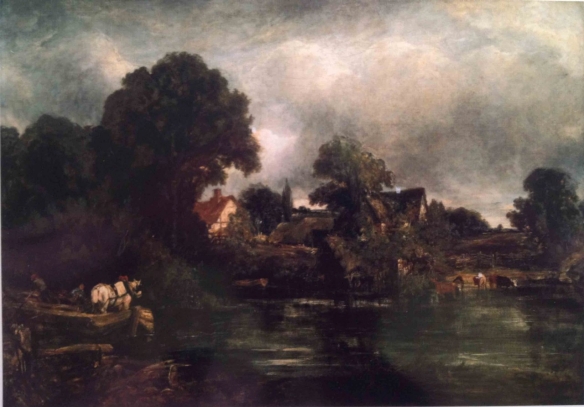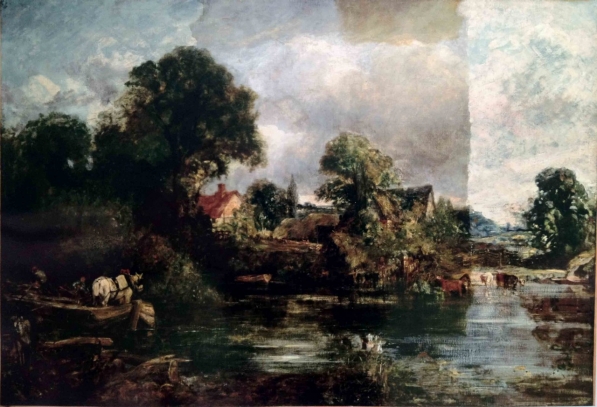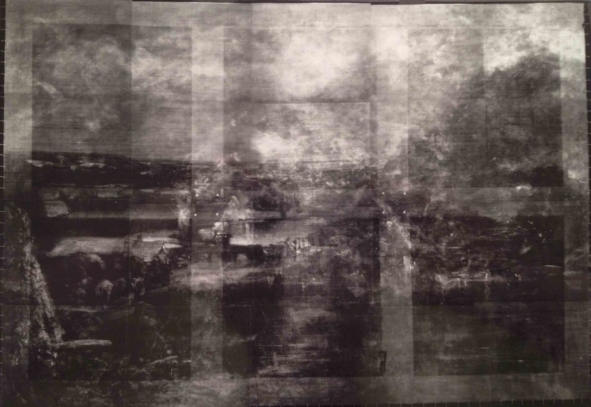John Constable (1776–1837) created landscapes that ranged from sketches with broad, loose strokes to highly polished and tightly rendered finished paintings. He would often arbitrarily end the painting process at any degree of finish in between. The four-by-six-foot painting The White Horse (1819), part of the Widener Collection at the National Gallery of Art, seemed to have been painted in one of these intermediate styles at the time of its donation in 1942.
Once considered a same-size second version of the highly finished The White Horse in the Frick Collection, New York City, the Widener White Horse showed a halfway degree of finish that became problematic in determining its attribution. If the painting had been more of a sketch, experts likely would have attributed it to Constable, because over the course of his career he had created nine four-by-six-foot paintings for the annual exhibition at the Royal Academy. For all but The White Horse, he had first created a full-size sketch. Because the Gallery's painting seemed more like a finished work than a sketch, and was somewhat awkwardly realized in a technique that did not really match any of those typically seen in Constable’s paintings, by 1977 scholars concluded that the painting was a lesser copy by another artist.



